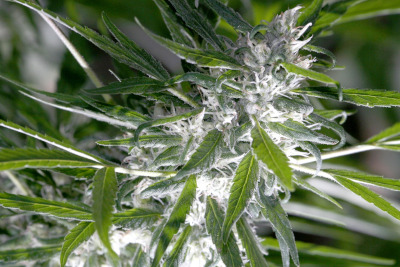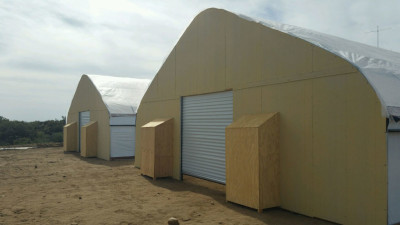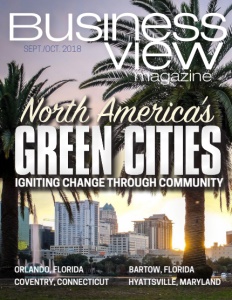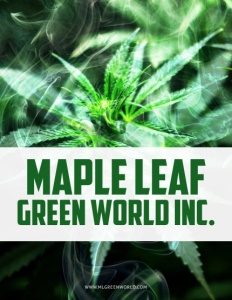Maple Leaf Green World Inc.
Promoting the benefits of Cannabis
Business View Magazine interviews Jameson Welbourn, VP Business Development for Maple Leaf Green World, as part of our focus on cannabis companies in Canada.
Maple Leaf Green World Inc. is a public company listed on the NEO (MGW) and OTCQX (MGWFF) Exchanges. Based in Calgary, Alberta, the company is focused on producing high quality cannabis flower and cannabis-derived products for medical and recreational use. Maple Leaf Green World is working now to develop, construct, and operate cannabis production facilities and distribute cannabis products in Canada, the United States, and ultimately to the international market.
Capitalizing on over ten years of extensive greenhouse management experience, Maple Leaf applies its eco-agriculture knowledge and cultivation experience to produce high quality, contaminant-free, cannabis. That experience, combined with land holdings in British Columbia, Nevada, and California, uniquely positions the company for success in the cannabis industry.

Jameson Welbourn
Vice President for Business Development
Recently, Business View Magazine interviewed Jameson Welbourn, Vice President of Business Development at Maple Leaf Green World, and discussed all things cannabis. The following is an edited transcript of that conversation:
BVM: Let’s begin with some background on Maple Leaf Green World and its evolution in the cannabis realm.
Welbourn: “Maple Leaf Green World started as a reforestation business in 2006. We successfully grew different varieties of seedlings and saplings – spruce, alder, and other deep-rooting plants that, when strategically planted, create a more stable environment to better prevent soil erosion. After seven years, there was a change of focus. We saw the potential benefits of leveraging our past experience and made the decision to refocus on the emerging medical cannabis business in North America.
“Our first cannabis project was our B.C. facility. Construction on Phase One, a 27,200 sq. ft. cultivation facility is scheduled for completion later this fall, and we will be cultivating and extracting (processing) cannabis for sale to the domestic market. Phase Two will be an 80,000-sq.-ft. cultivation facility adjacent to Phase One. We also have a project underway in Henderson, Nevada, about 15 minutes outside Las Vegas. Phase One is a 20,000-sq.-ft. facility. Phase Two will be a 40,000-sq.-ft. addition. We also own 20 acres of land in Riverside, California with two 3,000-sq.-ft. greenhouses onsite that are not yet active, as we are waiting for the city to come out with municipal regulations for commercial cultivation. We expect these regulations to be clarified in November of this year.
“Our plan in Riverside is to build ten additional 3,000-sq.-ft. greenhouses, utilizing the sun for that cultivation project, whereas Phases One in B.C. and Nevada will be indoor cultivation with artificial light. Phase Two in Nevada will be a hybridized model with greenhouse glass on the roof of our building. In doing so, we will be able to maintain a hermetically-sealed room, but still use the power of the sun. There are limitations on what you can do outside, compared to the high level of control and sterility you can achieve with indoor cultivation.”
 BVM: On Oct. 17, 2018, marijuana will become legal in Canada. What are your thoughts on medical vs. recreational cannabis?
BVM: On Oct. 17, 2018, marijuana will become legal in Canada. What are your thoughts on medical vs. recreational cannabis?
Welbourn: “I believe the future of the cannabis industry is in extractions, specifically on the medical side. I strongly believe there are a wide variety of conditions that can be treated with specific ratios of different cannabinoids isolated from the cannabis plant. And I think Canada is a great example of how to do it the right way by first introducing and developing a strong medical framework before permitting use on a recreational basis.
“People talk a lot about the commoditization of this industry. I tend to think about dried cannabis flower in comparison to wine. You can’t commoditize fine wine, but you can commoditize grapes. Through extractions, we’re creating the isolated compounds – cannabinoids – that can be used for various types of applications. Whether it be a preventative medicine to reduce the chances of late stage dementia, or addressing an anxiety issue, or loss of appetite from chemotherapy. The potential applications are incredibly wide-ranging.
“To make sure we have that ability, we will not only be cultivating the cannabis plants at our facility, we will be creating the secondary products such as cannabis oils, concentrates, and isolates there as well. This way we can be confident we are using the highest quality cannabis to create the highest quality secondary products.
“If you look at Colorado or California, studies show that smokable concentrates or extracts and edibles make up over 50 percent of the market. These are also the fastest growing market segments in recreationally legalized states in the U.S., and we feel that’s probably an accurate reflection of the future demand of the consumer base here in Canada.
“More importantly, people are starting to realize that cannabis has tremendous medical and health benefits. We, as humans, have an endocannabinoid system that helps our nervous system communicate with the rest of our body. This information is just recently starting to be taught in medical schools. We produce cannabinoids in our body when we’re born; as we age, we lose the ability to produce them, so we need to supplement our diet with CBD and many other cannabinoids that exist in the cannabis plant. There are massive benefits in treatment, prevention, and lifestyle aspects, and we’re excited about working with different groups to help people understand that it goes far beyond simply getting intoxicated. Cannabis and cannabis derived products can really make a healthy difference in your daily life.”
BVM: What role does marketing play?
Welbourn: “Marketing is a huge component and, along with education, are some of the biggest challenges in this industry. This is a new product with so many nuances and a whole new nomenclature for the entry level consumer to catch up on and learn the right questions to ask. This industry will be driven by brands, similar to what we see in the alcohol sector.
“As producers, we are fairly limited in the scope of what we can actually say about the benefits of our products, and the same goes for retailers. In Canada, the restrictions on what information can be disseminated by whom and from where are such that there are potential barriers for consumers to confidently make informed purchase decisions. A lot of it will come down to communities established online and through social media and apps that have peer-to-peer reviews where people can compare how they interacted with a specific strain or type of product.
“Third-party service providers are out there, now, working to aggregate this data and creating platforms where users can learn about the differences in strains and how the effects may vary. Companies like Leafly, Labrador Technologies, and Strainprint are working to solve these challenges that we know we’re going to face as an industry.”
BVM: Will you be selling direct to consumers, distributors, medical institutions?
Welbourn: “Initially, Maple Leaf will be producing cannabis for the recreational market all while we are setting up our extraction processes, further developing our product lines, and developing our e-commerce platform for our medical patient model. Ultimately we will be medical, first and recreational, second.
“For a medical cannabis company in Canada, that distribution model is direct to patient. Individuals contact a cannabis clinic, meet with a medical practitioner, and get their prescription or recommendation to use cannabis. Then, they choose from a list of licensed producers (LP’s), submit their medical documentation, log on to that company’s website, and purchase cannabis products through the LP they have selected.
“We will have a medical patient model, where we will ship directly to patient. On the recreational side, we will ship to various agencies that are in charge of distribution for each province. Typically, in Canada, the provincial liquor and gaming commissions have taken the lead on receiving recreational product from the LPs, and cannabis retailers then purchase through those governing bodies.
“Several recent independent market analyses have shown that we are, more than likely, looking at a significant undersupply of cannabis for the Canadian market for, potentially, the next two years.
“We’ve made a responsible choice to incorporate sustainable practices for our buildings in B.C., and it’s great for the local communities there because we are creating new employment opportunities. In the next ten years, it’s estimated that the cannabis industry will be creating 150,000 new jobs in Canada – everything from janitorial work, to cultivation, to processing, packaging, transportation, and security. It will make a huge impact, with the potential to change the way we think about medicine and health. Societal and cultural norms are shifting toward more traditional plant-based medicines and exploring these options before going to synthetic pharmaceuticals. I believe cannabis has tremendously far reaching medical applications.”
 BVM: What are the next steps for Maple Leaf Green World?
BVM: What are the next steps for Maple Leaf Green World?
Welbourn: “The next steps are to finish our facilities and begin cultivation in British Columbia and Nevada. Once those facilities are completed and operational, we will look to expand our facilities on our land in Riverside, California, pending county regulations. We understand the power this plant has to improve the quality of life, globally. We’re definitely looking to international markets.
“Producing high-quality, premium cannabis and cannabis products is something we are extremely passionate about and we are very proud of our world-class team of cultivators and extractors. Our commitment is to provide the highest-quality cannabis and cannabis products to both the medical and recreational markets. We feel that both segments of the market are far from being satisfied and we’re going to make great efforts to ensure we can play our part in making that happen.”
Check out this handpicked feature on Revelation Real Estate – #RevelationDomination.
AT A GLANCE
WHO: Maple Leaf Green World
WHAT: Developer of Cannabis Facilities
WHERE: Headquarters in Calgary, Alberta
WEBSITE: www.mlgreenworld.com
As a responsible developer of cannabis facilities, Maple Leaf Green World is recognized by Skeena Wild Conservation Trust for its support of the local economy and diversification in a responsible way.
Watch the video to learn more about the Telkwa, B.C. project at: https://youtu.be/IssDsnPApFo



